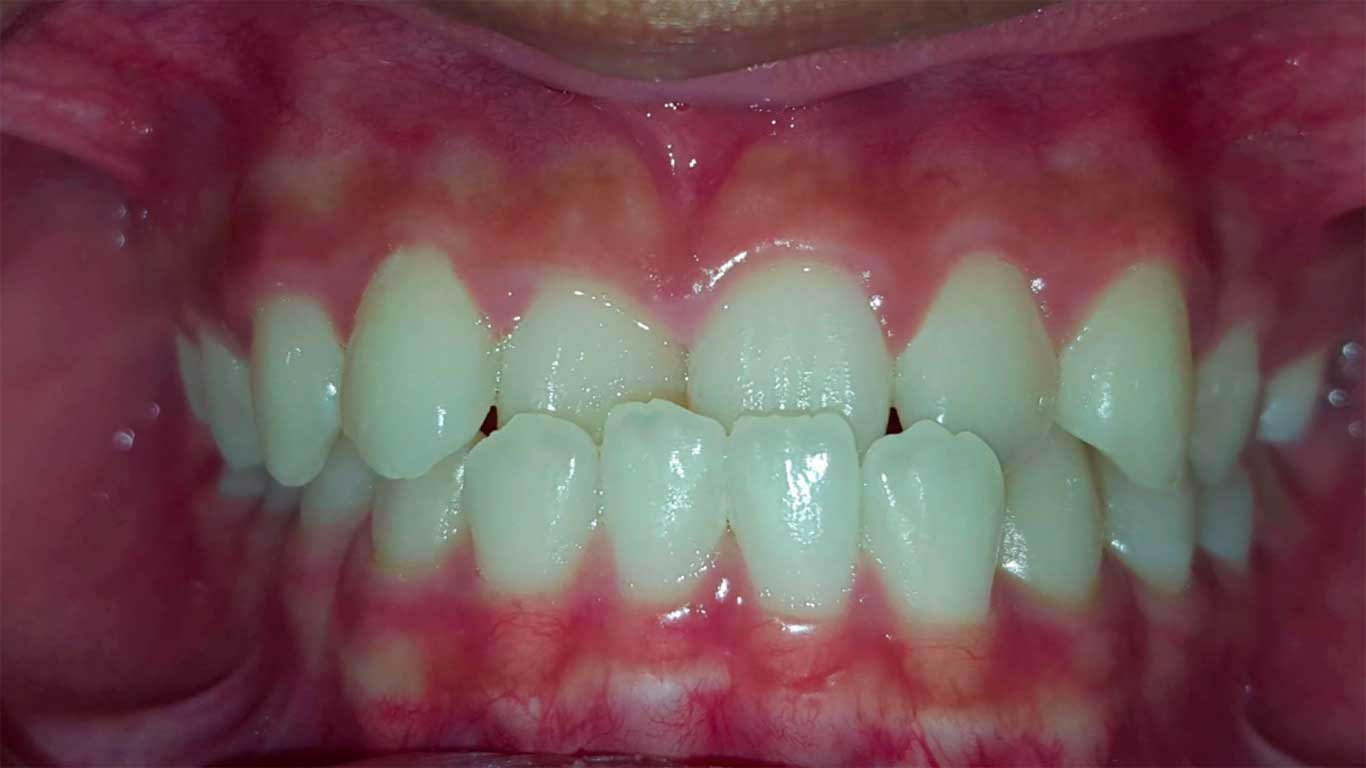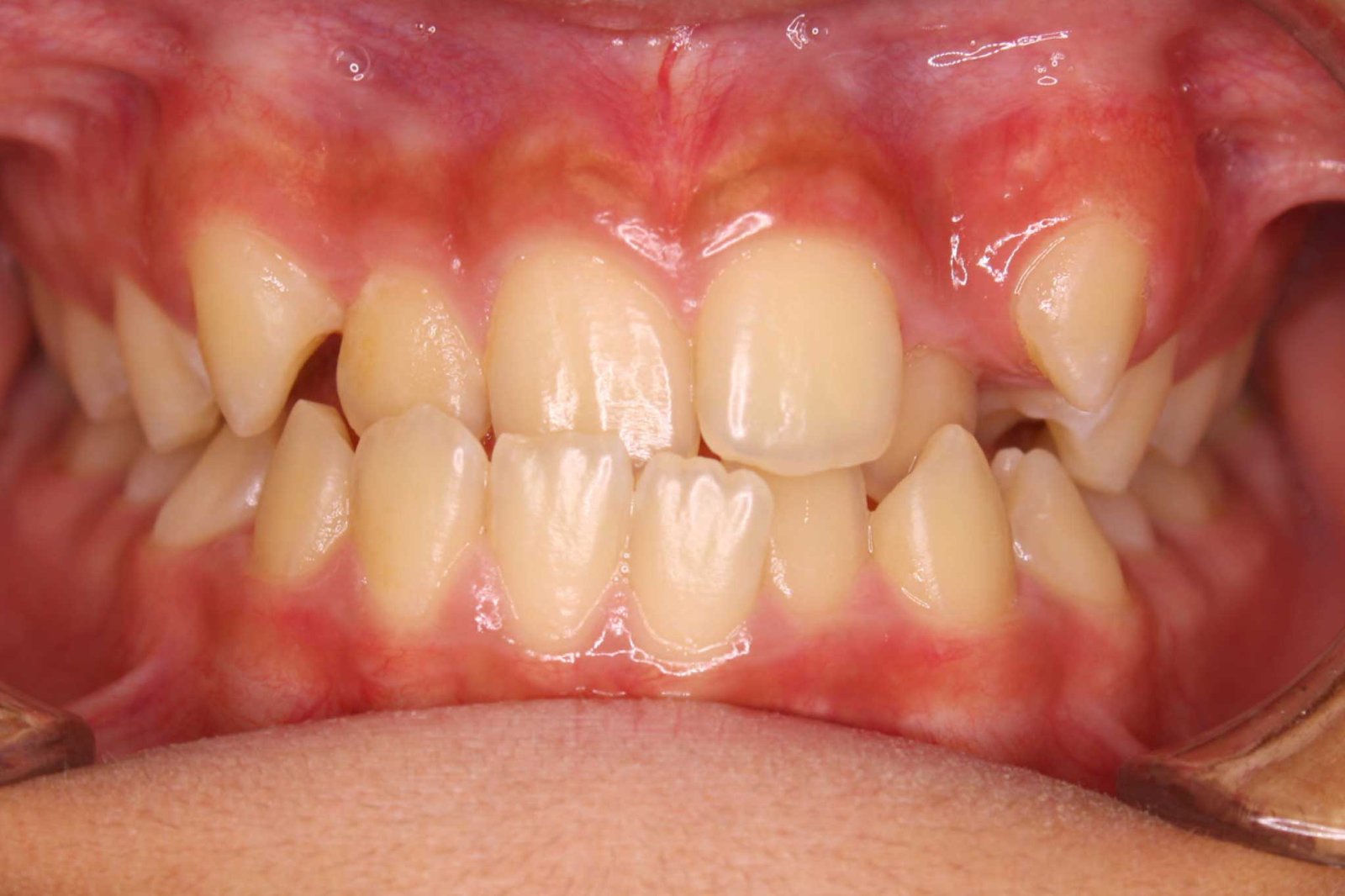Crooked Teeth
Teeth crooked are not something new, affecting both children and adults. While some people view them as a charming quirk that adds character to their smile, others may experience deep mental distress, health complications, or speech issues.
Due to the importance of the weight of teeth in people’s lives, we decided to dedicate this article to this subject and provide you with the most useful information.
Causes of Crooked Teeth and Treatment Options
Causes of Crooked Teeth:
Crooked teeth can develop due to a variety of factors, both during childhood and adulthood. These include:
- Jaw-Teeth Size Discrepancy: If your teeth are too large for your jaw, or your jaw is too small, misalignment can occur. Crowded teeth or overlapping teeth, especially at the bottom, can be caused by this difference in size.
- Tooth Loss or Absence:The absence of certain teeth can lead to neighboring teeth shifting out of place, causing crowding or crookedness.
- Extra Teeth or Frenulum Issues:The presence of extra teeth or a low-placed frenulum can prevent teeth from positioning properly.
- Habits & Conditions:Myofunctional habits, such as thumb-sucking, mouth breathing, or tongue thrusting, can affect muscle function and lead to misalignment. Conditions like asthma or allergies may also contribute to crowding or shifting.
- Genetics: Crooked teeth or other alignment issues can run in families, making it more likely that you’ll inherit them.
- Facial Injuries: Trauma or accidents to the face can cause teeth to be knocked out of alignment.

Read More: Orthodontics Before and After
Crowded or Crooked Teeth Treatment:
- Bracesor Invisalign are common treatments for crowded or crooked teeth, including both top and bottom teeth. These options help to gradually shift the teeth into their correct position.
- After treatment, retainers are crucial to maintain your straightened teeth. Without them, there's a risk that your teeth will shift back to their original position, a common issue after braces if retainers are neglected.
- Teeth Crooked After Not Wearing Retainers: If retainers are not worn as instructed, teeth can move back into their original misaligned position, sometimes becoming crooked again. In some cases, retainers may no longer fit properly if too much time passes without use.
By understanding these causes and sticking to a proper orthodontic plan, you can avoid complications and maintain a well-aligned smile.

Read More: Malocclusion
The Most Common Types of Crooked Teeth
- Crowding: Crowding occurs if your jaw is small and doesn’t have sufficient space for all your teeth. Crowding teeth are hard to clean, increasing the risk of cavities and other oral issues.
- Spacing (Diastema): If you have space between your teeth, food can get stuck in between, leading to cavities and gum disease.
- Openbite: Anterior openbite occurs when the back teeth are fitted together, but the front top and bottom teeth don’t overlap each other. Posterior openbite is reverse; the front teeth meat each other perfectly, but the back teeth don’t. Both types of openbite can cause problems with swallowing, tongue thrusting, and, in the worst case, difficulty speaking.
- Tooth rotation: Some teeth are rotated or twisted.
- Crossbite: Anterior crossbite—the most common type of crossbite — occurs when the upper front teeth (incisors and canines) are positioned too far over the lower front teeth. Posterior crossbite occurs when the upper back teeth (molars) are positioned too far over or under the lower back teeth.

Read More: Malocclusion Problems
Issues Caused by Crooked Teeth
Crooked teeth, including crooked canine teeth, can affect both physical and psychological well-being:
- Periodontal Disease: Misalignment can make cleaning between teeth difficult, increasing the risk of plaque buildup, gum disease, and tooth damage.
- Chewing and Digestion Issues: Crooked teeth can cause difficulty chewing, leading to poor digestion and nutrient absorption.
- Speech Problems: Misaligned teeth can impact how the tongue contacts the teeth, resulting in speech impediments.
- Excessive Wear: Crooked teeth can lead to jaw strain, cracked teeth, and chronic headaches.
- Self-esteem: Concerns about appearance can lower confidence and hinder social interactions.
Addressing crooked teeth can improve both dental health and quality of life.

Read More: Orthodontics for Teenagers
Crooked Teeth Treatment
If you're considering straightening your crooked teeth, there are several orthodontic options available to help you achieve a more aligned smile. Your choice depends on factors like severity, budget, and personal preferences.
- Metal Braces: Traditional, effective, and ideal for severe misalignments, metal braces cost between $3,000 and $7,500. Treatment typically lasts 2-3 years, with smaller brackets and colorful rubber bands now available for a more personalized look.
- Ceramic Braces: A more discreet alternative to metal braces, ceramic braces blend with your teeth but are prone to staining. They range in cost from $3,500 to $8,000.
- Invisible Braces (Invisalign): Clear, removable aligners that are perfect for minor to moderate issues. Costing between $3,500 to $8,500, Invisalign offers flexibility and ease, with aligners removed for meals and cleaning.
- Lingual Braces: Similar to metal braces but placed on the back of the teeth for a hidden solution. These are more expensive, ranging from $5,000 to $13,000, and can be harder to maintain and adapt to.
- Teeth-straightening Surgery: For severe misalignments, surgery may be necessary. This involves repositioning the jawbone and teeth for proper alignment, typically recommended when chewing or speech is affected.
Each treatment offers its own set of benefits and challenges. Speak with your orthodontist to find the best solution based on your needs, goals, and budget.
Read More: Orthodontic Treatment for Adults
Crooked Canine Teeth: Causes, Impact, and Treatment
What Are Crooked Canine Teeth?
Crooked canine teeth are teeth that don’t align properly within the dental arch. As the longest and often most prominent teeth in the mouth, the canines play a crucial role in both aesthetics and function. When these teeth are misaligned or positioned incorrectly, they can significantly impact the symmetry of your smile. Misalignment may involve the canine tooth being too far inward, outward, or even rotated, causing it to look out of place. This issue can be particularly noticeable because the canines are so visible when smiling.
Read More: Gapped Teeth
Why Do Canines Become Crooked?
- Jaw and Tooth Size Discrepancies: A smaller jaw may lead to crowding, affecting canine eruption and alignment.
- Genetics: Crooked canines often run in families, so inherited traits can contribute.
- Tooth Eruption Patterns: The late eruption of canines can cause them to become misaligned if other teeth affect their positioning.
- Habits: Thumb-sucking, mouth breathing, or tongue thrusting can lead to crooked canines.
Interestingly, in some cultures like Japan, slightly crooked canines, or yaeba teeth, are considered charming and desirable, adding uniqueness to the smile.
Read More: Different Types of Orthodontic Problems
How to Fix Crooked Canines?
- Braces: Traditional braces can effectively reposition crooked canines. Treatment duration ranges from several months to a couple of years, depending on severity
- Invisalign: For a discreet option, Invisalign aligners gently realign the canines without metal brackets, ideal for mild to moderate cases.
- Teeth Clip: A teeth clip applies pressure to misaligned canines, helping them shift into proper alignment. The teeth clip cost typically ranges from $100 to $400.
- Crooked Front Teeth Braces: If your canines affect the alignment of front teeth, braces can address both, realigning your smile.
Crooked canines, while often a cosmetic concern, can impact both function and aesthetics. Options like crooked canine braces, Invisalign, and additional treatments like teeth clips provide effective solutions. Consider your goals and consult with your orthodontist to choose the best treatment for you.
FAQs
Yaeba teeth refer to a specific type of dental misalignment where the canine teeth (often the upper ones) appear slightly crooked or protrude. In Japan, these slightly imperfect canines are seen as cute or even charming, especially in women. While this look may not be common in many other parts of the world, some people choose to deliberately get yaeba teeth as a cosmetic procedure.
The yaeba teeth cost can vary widely depending on the procedure and where it's performed. Typically, the cost ranges from $500 to $3,000. This procedure might involve cosmetic bonding or temporary dental fixtures to create the desired "fang-like" appearance. However, if you're considering yaeba teeth, it's important to consult with a qualified dentist to discuss options, potential risks, and maintenance.
A lopsided smile occurs when the symmetry of your smile is uneven, often due to crooked teeth or a misaligned bite. It’s common for the upper or lower teeth to not line up properly, giving one side of your smile a different appearance from the other. Braces or aligners can be very effective in correcting this issue, restoring symmetry, and giving you a more balanced, confident smile.
Crooked canine teeth are teeth that don’t align properly with the rest of your dental arch. These teeth may be rotated, tilted, or even misaligned compared to the surrounding teeth, which can affect both your appearance and oral health. Treatment for crooked canine teeth may involve braces, Invisalign, or other orthodontic solutions to reposition the teeth for a more even bite and aesthetic smile.
Crooked front teeth can significantly impact the appearance of your smile, making it look less symmetrical. In addition to the aesthetic concerns, crooked front teeth can also cause functional problems like difficulty chewing or speaking. Treatment for crooked front teeth braces is often the best solution to achieve a straighter and more even smile.
A teeth clip is often used in orthodontic treatments to help apply pressure on specific teeth to move them into alignment. It may be part of the larger braces system or used as a part of an Invisalign treatment plan. The teeth clip cost can vary, typically ranging from $100 to $400 per clip, depending on your location and the complexity of your treatment.
Crooked canine teeth are relatively common due to factors like genetics, jaw size, and habits like thumb-sucking. In many cases, they can be corrected with orthodontic treatment, such as braces or Invisalign, which can gradually shift the teeth into proper alignment. It’s important to address crooked canine teeth early to avoid further misalignment and potential complications.
Yes! Braces are one of the most effective treatments for correcting a lopsided smile. Braces work by gradually shifting your teeth into a more even alignment, correcting both minor and severe misalignments. If your lopsided smile is caused by misaligned teeth, braces can help create a more symmetrical smile.
The cost of braces for crooked front teeth can vary depending on your specific needs and location. On average, braces can cost anywhere between $3,000 to $7,500 for comprehensive treatment. If you're only addressing crooked front teeth, the treatment might be more affordable, and in some cases, you might qualify for options like Invisalign, which can be a less noticeable and convenient alternative.
If your teeth become crooked after braces, it's often due to not wearing your retainer as prescribed. Retainers are essential for maintaining the results of your orthodontic treatment and preventing teeth from shifting back into their original positions. If this happens, it's important to consult with your orthodontist to discuss options for re-aligning your teeth, which may include additional braces or other treatments.
What Happens During an Orthodontic Consultation?
At York Orthodontics, Dr. Mir conducts a thorough examination of your teeth and jaw, listening for any discomfort or unusual symptoms like popping sounds or strain while chewing. Using advanced tools like the iTero Scanner, we create precise 3D impressions to tailor the best treatment plan for you.
Located in York and Thornhill, we offer expert care, a range of treatments, and flexible payment plans to fit your needs and budget. Call today for a free consultation and start your journey to a beautiful smile!

